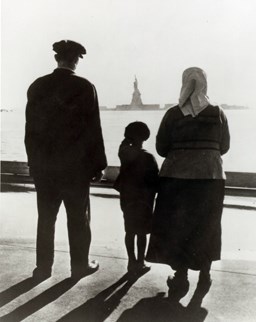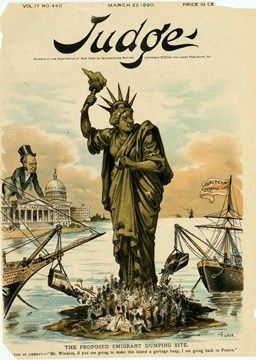
National Park Service, Statue of Liberty NM
Between 1886 and 1924, almost 14 million immigrants entered the United States through New York. The Statue of Liberty was a reassuring sign that they had arrived in the land of their dreams. To these anxious newcomers, the Statue's uplifted torch did not suggest "enlightenment," as her creators intended, but rather, "welcome." Over time, Liberty emerged as the "Mother of Exiles," a symbol of hope to generations of immigrants.

National Park Service, Statue of Liberty NM 
National Park Service, Statue of Liberty NM 
National Park Service, Statue of Liberty NM 
National Park Service, Statue of Liberty NM |
Last updated: February 26, 2015
